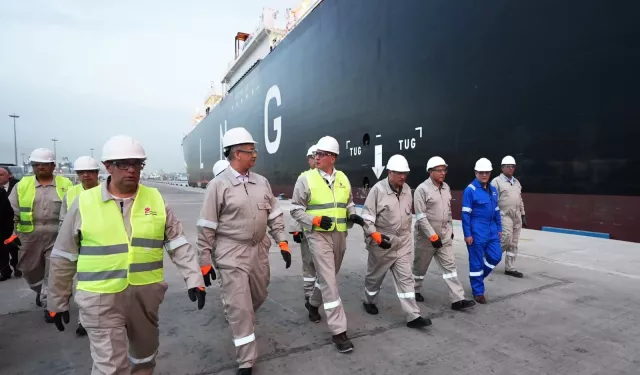Egypt’s liquefied natural gas imports jumped to $7.2 billion in the first 10 months of 2025, up from $3.85 billion a year earlier, amid scorching summer demand and a widening shortfall in domestic production, according to a senior official at the Ministry of Petroleum.
The official, who spoke to Al Manassa on condition of anonymity, attributed the sharp 87% year-on-year spike to a surge in import volumes, with Egypt receiving an average of 18 shipments per month at the height of summer, compared to just 5–7 shipments per month in summer 2024.
Third-quarter imports alone totaled $2.89 billion, nearly doubling second-quarter costs, which ranged between $1.4–$1.6 billion.
The Petroleum Ministry is responsible for securing the nation’s total gas needs through monthly coordination with the industrial and electricity sectors, a second ministry official explained to Al Manassa. EGAS and the Egyptian General Petroleum Corporation jointly assess national consumption forecasts to prevent production–consumption gaps.
“We’re working aggressively to reduce this dependency,” the official said, noting that the ministry is courting foreign investment in upstream exploration, particularly in “untapped geological basins,” to ramp up crude oil and natural gas production.
Import bills may drop by 20–30% in the fourth quarter, a third source in the ministry’s LNG contracting unit told Al Manassa, citing falling temperatures and reduced seasonal consumption.
Still, the gas production–consumption gap remains substantial. Egypt’s current output is pegged at 4.2 billion cubic feet per day, well below the 6.8 billion cubic feet peak recorded during summer, largely driven by power stations' high consumption rates.
To close the gap, the government leased five floating storage and regasification units to double import capacity and stabilize domestic supply.
Power generation alone consumed 70% of total LNG imports in 2025, while the remainder was allocated to energy-intensive industries and other sectors, the official added.
“Diversifying our supply mix—between local production, LNG cargoes, and pipeline gas from neighboring countries—allowed us to weather the summer spike without grid failure,” the official said.
But rising demand is straining public finances. Subsidies for industrial gas use rose 16% in Q3, reaching $525 million, according to a senior EGAS official who previously spoke to Al Manassa. “Persistently high global gas prices leave us little choice—we need to accelerate subsidy reform,” they said.
In September, local media reported that the government had informed high-consumption industries of an impending gas price increase, with a minimum hike of $1 per million British thermal units (MMBtu). Prices previously ranged between $4.50–$5.70 per MMBtu.
